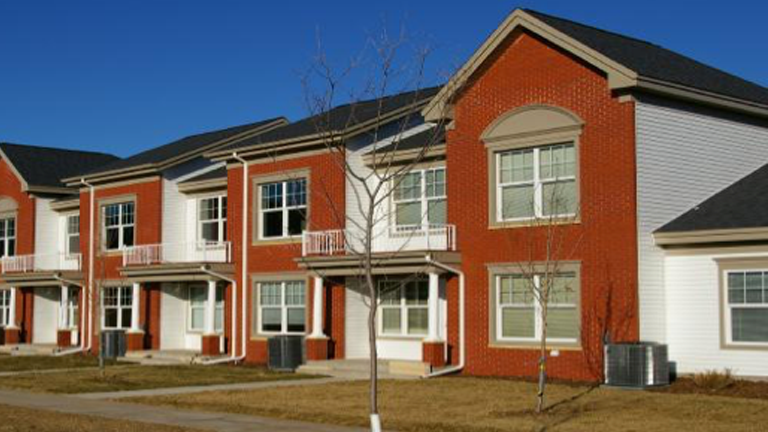The City of Chicago Department of Public Health is a trailblazer.
The City of Chicago Department of Public Health is a trailblazer in streamlining a vaccine clinic and management system.
“If any of Chicago's residents are vulnerable to COVID-19, we all are,” said Raed Mansour, Director, Office of Innovation at the Chicago Department of Public Health. “That's how we have to approach fighting this disease. We have to look at the city as a whole, use Federal guidelines to point to where we need to start vaccinating, and then focus on the most vulnerable within those groups -- doctors and nurses working at hospitals in areas of the city that are home to underserved residents, seniors living in nursing homes, and so on.”
The Chicago Department of Public Health’s (CDPH) mission is to promote and improve health by engaging residents, communities, and partners in establishing and implementing policies and services that prioritize residents and communities with the greatest need. It is a mission that delivers programs and services which help build a healthier Chicago, starting with those least likely to have access to privately funded healthcare plans. Think: healthy housing programs, emergency preparedness, adolescent health programs, and more.

Healthy Chicago 2025
Healthy Chicago 2025 is Chicago’s five-year community health improvement plan that focuses on racial and health equity. Launched September 17, 2020, the mission “is to create a city where all people and all communities have power, are free from oppression; and are strengthened by equitable access to resources, environments, and opportunities that promote optimal health and well-being”.
The Healthy Chicago 2025 Themes are:
- Transform policies and processes to foster anti-racist, multicultural systems.
- Strengthen community capacity and youth leadership.
- Improve systems of care for populations most affected by inequities.
- Further the health and vibrancy of neighborhoods.
The Healthy Chicago 2025 Program is a call to action for community partnership to promote optimal health and well-being throughout the Chicagoland area.
The criteria that called for a cloud-based strategy.
This translated into three key objectives:
1. Behavioral: the easier it is for people to engage in the process, the more likely they will be to participate. CDPH needed a way to make information and instructions available in multiple languages, and then be able to communicate that over SMS text messaging as easily as it might over traditional channels like email or phone. It needed a way to replace clipboards, shared pens, and paperwork with online forms that could be completed at home. It needed to design an intuitive, human-centered process.
2. Branding: If the process for signing up and receiving a COVID-19 vaccine is unreliable, it could easily impact the public’s perception of the vaccine’s efficacy. “We have to build trust. If the process isn’t trustworthy and if people lose faith in the department, we run the risk of residents not wanting to get vaccinated,” said Mansour. CDPH needed a way to schedule appointments while also allowing for walk-ins -- especially during busy times like nights and weekends for those who might be essential workers. CDPH needed a way to move people through the process efficiently while also keeping everyone socially distanced, and demonstrate a dependable customer experience while also allowing for the kind of flexibility COVID-19 has ended up demanding time and time again.
3. Burdenless: The COVID-19 vaccine is a two-shot regime, which means departments like CDPH will need to decrease the burden that might otherwise deter people from coming back for their second dose. “If we can show people that we are using the information they gave us in round one to safely update their files and medical records, log in versus register, and overall have a more seamless visit when they come back for round two, they’re more likely to come back in,” said Mansour.
These three objectives all pointed to testing out a cloud-based technology solution, and flu season was the perfect pilot.
Introducing Chicago’s streamlined vaccine clinic management system.
CDPH launched a vaccine clinic management system on the FedRAMP-authorized Salesforce Government Cloud. It is an online, automated, self-service platform that Chicago residents can use to schedule a flu vaccine appointment -- in advance from a desktop system or upon arrival at one of the city’s many inoculation sites using their mobile device. It also enables compliance with applicable privacy laws, including the Health Insurance Portability and Accountability Act (HIPAA). Here’s how it works:
If a resident wants to schedule a flu shot, they can visit the city’s online portal built on Experience Cloud. There, they are prompted to create a profile -- basic information like name as well as the option to input demographic information, include any applicable health insurance information, add family members, opt-out of the state’s registry, and confirm consent permissions per CDC requirements.

Five best practices from CDPH.
Once the resident arrives for their appointment, they are checked in via a confirmation code or QR code and asked basic COVID-19 screening questions, all of which is recorded in their profile via Service Cloud. Any steps that might have been missed and/or on-the-spot registrations can also be managed, helping the city capture complete profiles on their residents. The vaccination is recorded, and the record is added automatically to the State’s immunization registry based on the permissions granted by the resident during the registration process.
Salesforce Shield was added to offer an additional layer of security given the amount of personal identifiable information being managed by the system. Residents are prompted to return to the online portal to view vaccination history and access quick reference information about the process.
“We first tried this with CDPH staff, made adjustments based on their feedback, and then rolled it out to the public,” said David Juen, Project Coordinator for CDPH. “This has really streamlined what used to be a paper process, allowing us to manage more residents and capture more data.”
Chicago: the example of being vs. getting ready for COVID-19 vaccines.
“Every prior flu season was all managed on paper,” said Juen. “Staff would have to stay onsite until the paperwork for every appointment that day was counted and submitted to our data entry team. Then, that team would have to manually input the data, which we could pull results on maybe four to six weeks later.” That pace would likely collapse given the speed, demand, and data analytics CDPH is expecting with COVID-19 vaccines.
“This flu season has served as a nice test case for us. The amount of real-time data analysis we can do is just phenomenal. We have dashboards that break down the total number of flu vaccinations by demographics, zip code, day of the week, and more,” June continued.
The team is using these insights to not only see how well the city is serving its most vulnerable groups, but also pinpoint where they need to spend more time and energy on outreach and communications when COVID-19 vaccines become more widely available, how many appointments they can support, and how much staff will be needed to cover those appointments.
“The virus is forcing us to evolve,” said Mansour. “Every day we are getting new news about COVID-19, new news from the CDC, and new news on vaccinations. We have been able to test these scenarios in our vaccine clinic management system, and do more to keep Chicago safe.”






